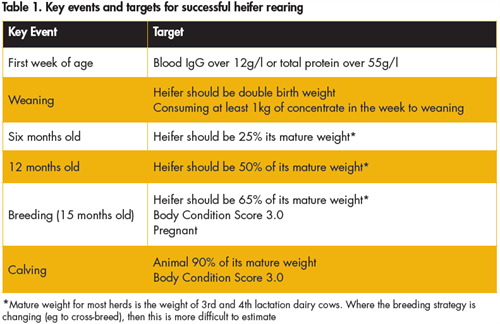Using MAM for success in heifer rearing
Friday, 9 September 2016
Over the past 12 months, AHDB Dairy has been travelling from Land’s End to Aberdeen as part of the Calf to Calving initiative.
The ultimate aim, improving the performance of the nation’s replacement heifers.
“During this time, we have encountered several different, but successful ways of rearing replacement heifers,” says AHDB Dairy’s Dr Stephen Whelan, “but the one thing that the successful farms have in common is attention to detail.”
In measuring success, we are looking for the animal to achieve specific targets during its lifetime.
These targets, in turn, provide us with a means of planning for achievement through correct nutritional management.
The first step is for farms to lay out their targets, these are largely based on birth weights and mature weights of your herd as follows:

From the table above, you will notice that a lot of the management of the replacement heifer revolves around measuring and, more specifically, weighing. But there is little point in weighing if action is not taken, Stephen explains. This is where MAM comes in, monitor, act and measure.
Monitor: We have set targets, but how do we know they are being achieved? Ideally, animals should be weighed on a monthly basis to check performance. It doesn’t stop with the animal either, monitoring the feed being offered is also critical in making sure supply meets requirements. Forages should be analysed every month, feed should be offered based on weight and not buckets or area.
Act: What if something is not right, the animal is not on target? We then need to act. This can be a process mapping exercise, checking feed and health to see if there are issues here. We recommend monthly weighing and forage testing so that early and effective changes can be made to correct any issues.
Measure: How do we know if changes made have been effective? A typical example here would be weaning, a follow-up weighing at three months will help determine whether or not the weaning was a success. Without a doubt, using the MAM approach requires a higher level of input into the management of your replacement heifers.
But, look at the costs of poor management, £2.87/animal for each day older than a 24-month calving age, reduced longevity in the herd and a higher replacement rate. Can you afford not to pay attention?

